Removing adhesive-fixed carpet
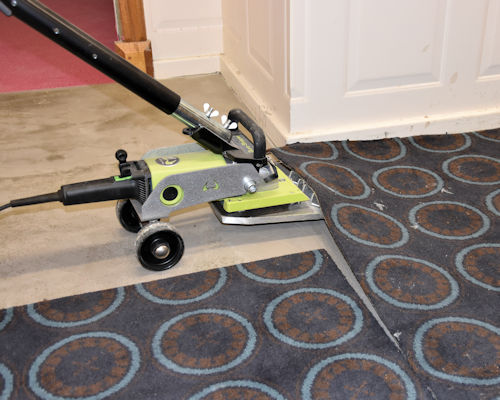 Audio for slide 1 (mp3 |6|KB)
Audio for slide 1 (mp3 |6|KB)
Adhesive-fixed carpet includes direct-stick and double-bond carpet that is stuck down to the subfloor with a full-spread adhesive.
It also includes carpet tiles, which are most likely to use a pressure sensitive adhesive.
For full details on how these types of carpet are laid and secured, see the following units:
- Adhesive-fixed carpet - for direct stick and double-bond installations, particularly in commercial applications
- Carpet tiles - for tiles laid on a pressure sensitive adhesive.
There are various methods used to remove adhesive-fixed carpet and adhesive residue, depending on the age of the original installation, the materials that were used and the difficulty involved in pulling it up.

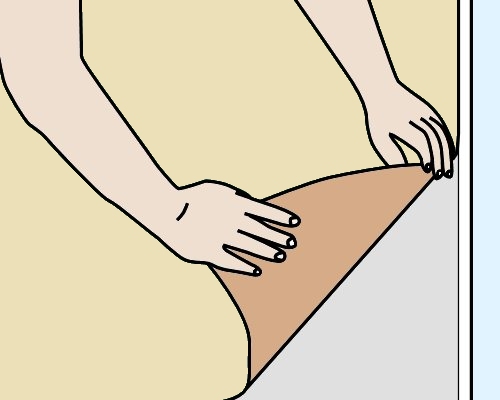 Audio for slide 2 (mp3 |6|KB)
Audio for slide 2 (mp3 |6|KB)
Hand removal
Sometimes you may be able to pull sections of broadloom carpet up by hand - in which case you can use the techniques described in the previous lesson.
If you have trouble pulling up the full width in one go, cut the carpet into sections and come back to the areas that require mechanical assistance.
Carpet tiles that have been stuck down with pressure sensitive adhesive are designed to be pulled up easily. However, if you plan to re-use the existing adhesive for a new tiled floor, be careful not to contaminate it with particles or debris.

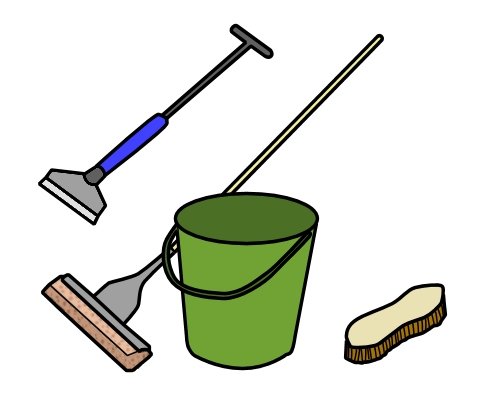 Audio for slide 3 (mp3 |6|KB)
Audio for slide 3 (mp3 |6|KB)
Chemical adhesive removers
There are some chemical formulations that are designed to be poured onto the carpet to help dissolve and loosen up the adhesive bond.
However, this method of removal is not normally used by professional floor layers, because the chemical residue can remain on the subfloor surface and react with the new adhesive that will be applied.
Generally, it's safer and more reliable to use mechanical removal techniques.

 Audio for slide 4 (mp3 |6|KB)
Audio for slide 4 (mp3 |6|KB)
Hand held devices
Hand-held devices include carpet pullers and floor scrapers.
Carpet pullers are designed to clamp the edge of the carpet and provide a lever action to break the adhesive bond.
For increased leverage, a floor scraper can be slid underneath the carpet or underlay and levered upwards to help separate the material from the subfloor.
A smaller hand-held scraper can also be used to chip away the adhesive while you pull back the carpet with your other hand.

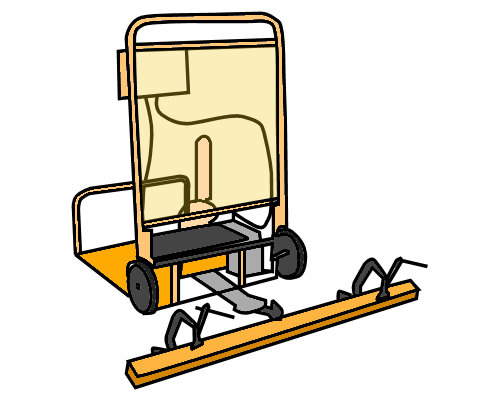 Audio for slide 5 (mp3 |6|KB)
Audio for slide 5 (mp3 |6|KB)
Walk-behind machines
Walk-behind machines range from manually-operated devices through to powered units that run on mains electricity, LPG or battery.
Some stand-up machines use a winch action to pull up the carpet after the leading edge has been clamped into place.
Other units use a scraping action, with oscillating blades that can be adjusted to different angles.

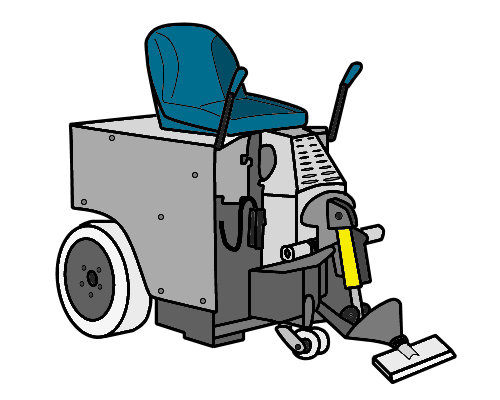 Audio for slide 6 (mp3 |6|KB)
Audio for slide 6 (mp3 |6|KB)
Ride-on machines
Ride-on floor scrapers tend to use fixed blades that rely on the weight and power of the machine to break the adhesive bond as it separates the carpet from the substrate.
Most ride-on machines can be fitted with a range of blade attachments to suit other surface materials, such as ceramic tiles, vinyl, parquetry and cement screeds.


Learning activity
Audio 7 (mp3 |6|KB)Do some research into powered floor scrapers, either on the web or using product brochures.
Choose one walk-behind machine and one ride-on machine suitable for removing adhesive fixed carpet.
Fill in the table in your workbook, listing the brand name, power source, blade width and other features of the machines.





